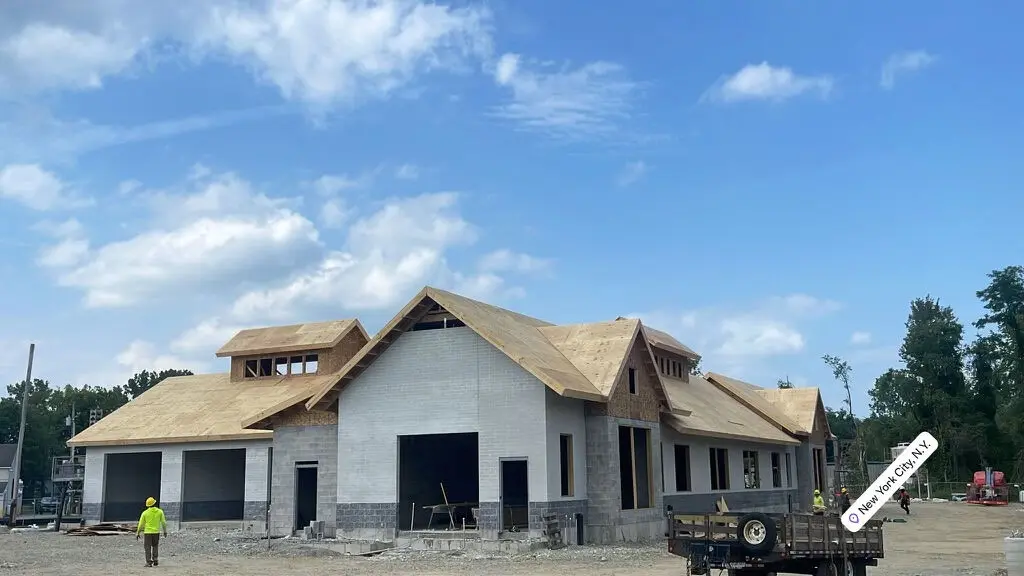In the realm of construction, the foundation of a successful project lies far beyond the blueprints. Quality site work plays a pivotal role in ensuring that building projects run smoothly, stay on budget, and meet all the necessary standards. From initial site assessments to proper soil management and drainage solutions, every aspect of site work contributes to the overall success of the building endeavor. This blog will explore the essential elements of quality site work and how they directly impact the outcomes of construction projects.
Understanding the Role of Site Work in Construction
Site work encompasses a wide range of activities that prepare a construction site for building. Understanding its role is essential for anyone involved in a construction project. This section will delve into the various components of site work, including surveying, excavation, and grading, and why they matter.
At its core, site work is the very foundation upon which all further construction activities rest. It starts with a detailed surveying process that establishes boundaries and identifies potential obstacles. This initial step not only ensures compliance with zoning regulations but also informs the design process, making it crucial for project success.
In essence, without thorough site work, construction may face unforeseen challenges that can delay timelines and inflate budgets. For example, improper grading can lead to water pooling, soil erosion, or sedimentation issues that compromise the integrity of the building. Thus, recognizing the significance of site work sets the stage for a seamless construction experience.
Furthermore, excavating the site involves more than merely digging. It requires a strategic approach to remove or relocate materials, ensuring that the land is correctly prepared for the intended structures. Each component of site work is interrelated, illustrating how neglecting any one detail can cascade into larger issues down the line.
The Impact of Proper Site Preparation
Proper site preparation can significantly affect not just the construction process, but the longevity of the building itself. This section discusses how inadequate site preparation can lead to structural issues and costly repairs down the line.
Imagine investing both time and finances into a dream building project, only to find that foundational issues arise years later due to improper site preparation. This scenario highlights the critical importance of taking the time to adequately prepare the site. Proper site preparation encompasses everything from soil compaction to the installation of stabilization measures, significantly reducing the chances of future complications.
When we think about building longevity, one cannot underestimate the role of a solid foundation, which begins with proper site work. If soil is not properly compacted or drainage is not accounted for, structural issues such as settling or sinking may arise. What could have been an easily avoidable situation turns into a financial burden that could compromise the entire project.
In addition, meticulous site preparation directly contributes to the efficient workflow on-site. When crews arrive and find that the site is ready for immediate construction, productivity soars, timelines get met, and budget overruns are minimized. Thus, proper site preparation becomes an investment that pays off tenfold in operational efficiency.
Soil Testing: The Foundation of Quality Site Work
Soil testing is a crucial step in site work that informs the decisions made during construction. This section will cover the importance of soil testing, the types of soil analysis, and how the results influence building design and safety.
Without a doubt, soil testing is often overlooked yet serves as the backbone of quality site work. The significance of understanding soil composition cannot be emphasized enough; it dictates everything from the type of foundation to be used to the safety measures necessary to ensure structural integrity. Soil testing examines various parameters such as density, moisture content, and bearing capacity, providing invaluable data that guides the entire construction process.
The results from these soil analyses can dictate significant design alterations, emphasizing just how vital this step is. For example, a soil report revealing high clay content might prompt a switch from a traditional foundation to a more adaptive approach that can better accommodate the soil’s characteristics. This proactive strategy not only aids in avoiding future complications but also furthers the project’s success.
Moreover, soil testing enhances safety on-site. By understanding the characteristics of the ground underneath, builders can implement necessary precautions. For instance, if tests show susceptibility to flooding, drainage solutions can be pre-emptively designed to mitigate risks. Ultimately, soil testing is not merely a preparatory task; it serves as a crucial element that ensures both safety and efficiency throughout the building project.
Drainage Solutions for Sustainable Building Projects
Effective drainage is vital for preventing water-related issues in a building. Here, we’ll explore various drainage systems, their benefits, and how they can enhance the integrity of a construction project.
One cannot overstate the importance of effective drainage in preserving the health and longevity of a structure. Across a diverse range of landscapes and climates, properly designed drainage systems mitigate risks associated with water accumulation and soil erosion. There are several types of drainage solutions available, including trench drains, French drains, and surface drains, each tailored to meet the specific needs of a site.
Consider the implications of neglecting drainage solutions: not only can water damage occur, but more severe problems like mold growth and foundation instability can compromise the entire project. By implementing robust drainage systems, project stakeholders protect their investments and ensure that properties remain safe and functional long into the future.
Furthermore, sustainable drainage solutions not only address immediate concerns but also promote environmental responsibility. Green infrastructure, such as permeable pavements and bioswales, can efficiently manage stormwater while enhancing the site’s aesthetic appeal. These innovations not only benefit the construction project but also contribute to larger ecological goals, showcasing how quality site work can harmonize with nature.
Collaboration Among Project Stakeholders
Successful site work requires seamless collaboration among architects, engineers, contractors, and other stakeholders. This section elaborates on the importance of communication and teamwork in achieving quality outcomes in site work.
The complexity of construction projects demands a multi-disciplinary approach, where each stakeholder plays a pivotal role. Architects envision the project, engineers ensure structural integrity, and contractors manage the execution. Without effective collaboration, even the best plans can unravel, leading to costly misunderstandings and delays. This emphasizes that teamwork is not just beneficial, but essential.
Regular communication channels must be established to ensure all parties remain aligned throughout the project. Status meetings, progress reports, and feedback loops create an environment where information flows freely. This level of transparency ultimately leads to a unified understanding of project goals, timelines, and challenges that may arise, ensuring that quality site work is consistently prioritized.
Additionally, technology can play a significant role in enhancing collaboration among stakeholders. Utilizing project management software that allows for real-time updates and shared documentation minimizes confusion and keeps everyone on the same page. By fostering a collaborative atmosphere, construction teams can tackle challenges head-on, paving the way for successful site work.
The Cost-Benefit Analysis of Investing in Quality Site Work
While investing in high-quality site work may seem costly upfront, the long-term savings and benefits far outweigh these initial expenses. This section analyzes the economic impact of quality site work and how it can ultimately lead to greater savings and project success.
From an investment perspective, quality site work demonstrates its value over time. Ignoring this crucial phase for the sake of saving a few dollars can lead to catastrophic consequences. When a construction project fails to account for proper site preparation, the subsequent need for repairs, modifications, or even complete reconstruction can be staggering. Thus, a cost-benefit analysis strongly favors high-quality site work.
Moreover, investing in quality site work bolsters overall project efficiency. When the site is well-prepared, construction flows faster, resources are utilized more effectively, and labor costs are kept in check. This relationship between site work and overall project success highlights the importance of viewing site work not as a separate line item, but as an integral part of the entire project budget.
Long-term, the benefits extend beyond financial savings. Projects that prioritize quality site work tend to experience fewer disruptions and delays, leading to greater client satisfaction. Happy clients are more likely to return for future projects and even refer others, creating a ripple effect in securing ongoing business.
Final Thoughts on the Importance of Quality Site Work
In conclusion, quality site work is the cornerstone of successful building projects. By investing time and resources into thorough site preparation, effective planning, and meticulous execution, construction teams can mitigate risks and create a strong foundation for everything that follows. As the world of construction continues to evolve, prioritizing quality site work will remain a vital strategy in achieving lasting success and client satisfaction.


